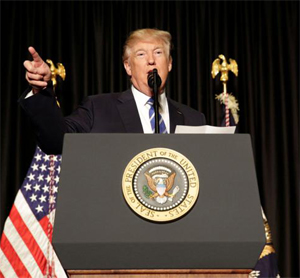Washington, Jun 2: President Donald Trump's administration has asked the US Supreme Court to reinstate its controversial ban on travelers from six Muslim majority nations despite repeated setbacks in the lower courts.
"We have asked the Supreme Court to hear this important case and are confident that President Trump's executive order is well within his lawful authority to keep the Nation safe and protect our communities from terrorism," Justice Department spokeswoman Sarah Isgur Flores said following the government's filing with the high court.
"The president is not required to admit people from countries that sponsor or shelter terrorism, until he determines that they can be properly vetted and do not pose a security risk to the United States."





Comments
Add new comment